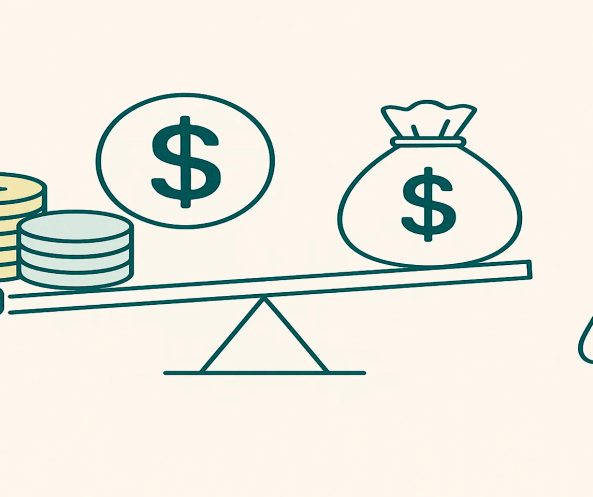Bank Forecasts 2030: How Auction Loans Could Evolve Into a Global Mainstream Lending Sector
Bank Forecasts: Will the Auction Loan Market Grow by 2030?
Auction finance has been quietly growing, moving from a niche service for elite collectors into a more visible part of the global lending landscape. Auctions are no longer confined to art and jewellery in closed halls; they now include online bidding for rare cars, wine, industrial machinery, and even digital assets. Alongside this expansion, banks and alternative lenders have developed credit products that allow buyers to borrow against future returns or collateralize their winnings. As forecasts for 2030 circulate, the key question is whether the auction loan market will mature into a mainstream financial sector or remain a specialized niche shaped by cycles of wealth and speculation. Examining bank perspectives, real-world examples, and possible scenarios helps us understand what lies ahead.
Why Demand for Auction Loans Is Rising
Auctions attract urgency—decisions are made in minutes, not months. Buyers often do not have cash ready but also do not want to miss opportunities. Loans allow them to participate without liquidating other assets. Demand is increasing as auctions diversify, with rare watches, vintage cars, collectible wines, and gemstones joining the traditional categories. Emerging middle classes in Asia, Africa, and Latin America also bring new participants who use credit to access high-value markets that were once limited to established elites. Online platforms make this possible by connecting local buyers to international auctions, where financing options are offered as seamlessly as credit at retail checkouts. This mix of urgency, accessibility, and wealth redistribution explains why banks forecast rising demand.
Jewellery Auctions
Borrowers in Geneva or Dubai often use short-term loans to acquire high-value jewellery at auctions, leveraging the asset itself as collateral. The practice has spread to middle-market auctions, where banks now provide smaller, structured loans tailored to private collectors rather than just institutional clients.
Classic Cars
In the United States, car enthusiasts increasingly rely on financing to bid at classic car auctions. Lenders see these cars as tangible, insurable assets, and buyers use loans to avoid selling other investments quickly. The result is higher participation and more aggressive bidding.

Bank Perspectives on Growth
Banks view auction lending as an extension of wealth management. Instead of just offering investment advice, they help clients acquire assets that may appreciate or diversify portfolios. Rare items like diamonds or paintings can be used as collateral for other credit lines, deepening relationships between clients and banks. Private banking divisions in Switzerland, Singapore, and London already integrate auction loans into broader financial planning. Forecasts suggest that by 2030, this will be common practice. Some banks expect lending volumes tied to auctions to double, driven by growth in luxury markets and expanding participation by institutional buyers. Still, they remain cautious, noting that volatility in asset prices makes forecasting growth more art than science.
London’s Private Banks
Wealth managers in London already arrange pre-approved auction loans for clients. This allows buyers to walk into Christie’s or Sotheby’s with financing guaranteed. Banks see this as relationship-building, positioning themselves not just as lenders but as facilitators of lifestyle and investment goals.
Asian Financial Centers
In Hong Kong and Singapore, auction loans are promoted alongside portfolio services. Banks use these products to attract younger high-net-worth individuals who want both digital convenience and access to traditional collectibles. Forecasts suggest these regions will dominate growth by 2030.
Challenges That Could Slow Expansion
Forecasts remain optimistic, but risks are clear. Rising interest rates could discourage borrowing, especially if returns on assets fail to keep pace. Regulatory scrutiny is another concern: as more money flows into high-value auctions, compliance with anti-money-laundering rules becomes stricter. Transparency in ownership and provenance will matter more, and lenders will need to adapt. Market volatility also complicates growth. If prices for art, gems, or collectibles fall, banks face higher credit risk. Defaults in one region could influence confidence elsewhere, making lenders more conservative. These factors may not stop growth but could shape where and how it happens, leading to regional differences in development by 2030.
Interest Rate Shock
If central banks keep rates high through the late 2020s, borrowing appetite may shrink. Investors may only borrow for assets with strong upside potential, leaving lower-tier auctions with less financing activity.
Provenance Risk
Cases where artwork provenance is disputed can put lenders at risk. If ownership is challenged, the collateral value of the loan collapses. Regulators are increasingly pushing for digital provenance verification to mitigate this risk.
The Role of Technology
Technology is set to transform auction lending. Digital platforms already allow online bidders to request financing in real time, with approvals arriving in minutes. Blockchain-based systems may soon record collateral ownership, reducing disputes. Artificial intelligence can analyze borrower history and predict repayment risk with greater accuracy, making lending faster and safer. Fintech companies are entering this market aggressively, offering smaller loans to a wider pool of buyers, while traditional banks refine services for high-net-worth clients. By 2030, auction lending could be a hybrid space where fintech platforms handle mass-market borrowers, and private banks specialize in ultra-high-value transactions.
Instant Credit Apps
In the U.S., some platforms already link auction bids with pre-approved credit lines. Buyers click to finance instantly, mirroring consumer credit models but at far higher values. By 2030, this could become standard in mid-range auctions worldwide.
Blockchain Collateral Tracking
Blockchain technology is being tested to track ownership of gemstones and rare art pieces. Lenders gain confidence knowing collateral is digitally verified. By 2030, this could be routine, making loan approvals quicker and more secure.

Forward-Looking Scenarios
Forecasts are never absolute; instead, they outline possibilities. In an optimistic scenario, global wealth continues expanding, especially in emerging markets. Auctions become routine events for a broad investor base, and financing is a standard feature, no longer viewed as exotic. In a moderate-growth scenario, the sector expands but unevenly, with Asia and the Middle East outpacing Europe and North America due to demographic and wealth trends. In a cautious scenario, rising rates, stricter regulations, and volatile asset markets slow expansion, keeping auction lending as a niche service limited to the wealthy. Each path highlights the balance between opportunity and risk as banks look to 2030.
High-Growth Path
Emerging middle classes in Asia drive global participation. Online platforms integrate lending so deeply that auction credit resembles mortgage systems. Banks and fintechs collaborate, and loans double or triple in volume.
Moderate Growth
Growth continues but is concentrated. Asia, the Middle East, and parts of Africa flourish, while North America and Europe face maturity and regulatory drag. Auction loans become selective but steady.
Cautious Future
In a world of high rates and tighter rules, auction finance contracts. Only ultra-high-net-worth clients continue borrowing, and banks treat the segment as ancillary rather than central to services. Fintechs pivot to other areas.
Conclusion
By 2030, the auction loan market may look very different from today. Banks forecast growth, but the scale will depend on how wealth shifts, how technology develops, and how regulations respond. More examples already show how borrowers—from jewellery buyers in Dubai to car collectors in the U.S.—use credit to participate, proving that demand is real. The open question is not whether auction lending will grow, but how far and how fast. Whether it becomes a mainstream pillar of global finance or remains a niche shaped by cycles, it is clear that borrowing will play an increasingly central role in how auctions function in the coming decade.










 Financial Analyst & Luxury Asset Lending Specialist
Financial Analyst & Luxury Asset Lending Specialist